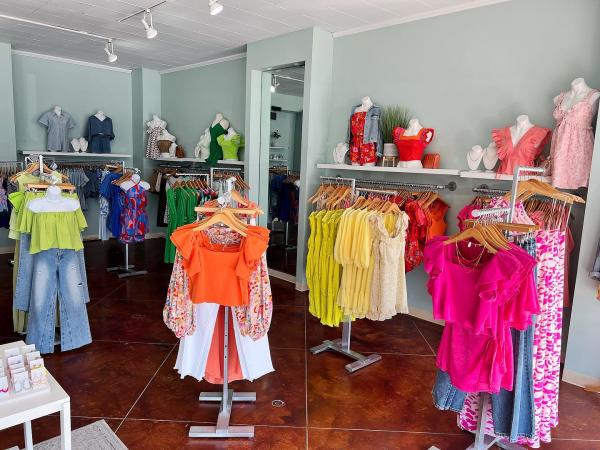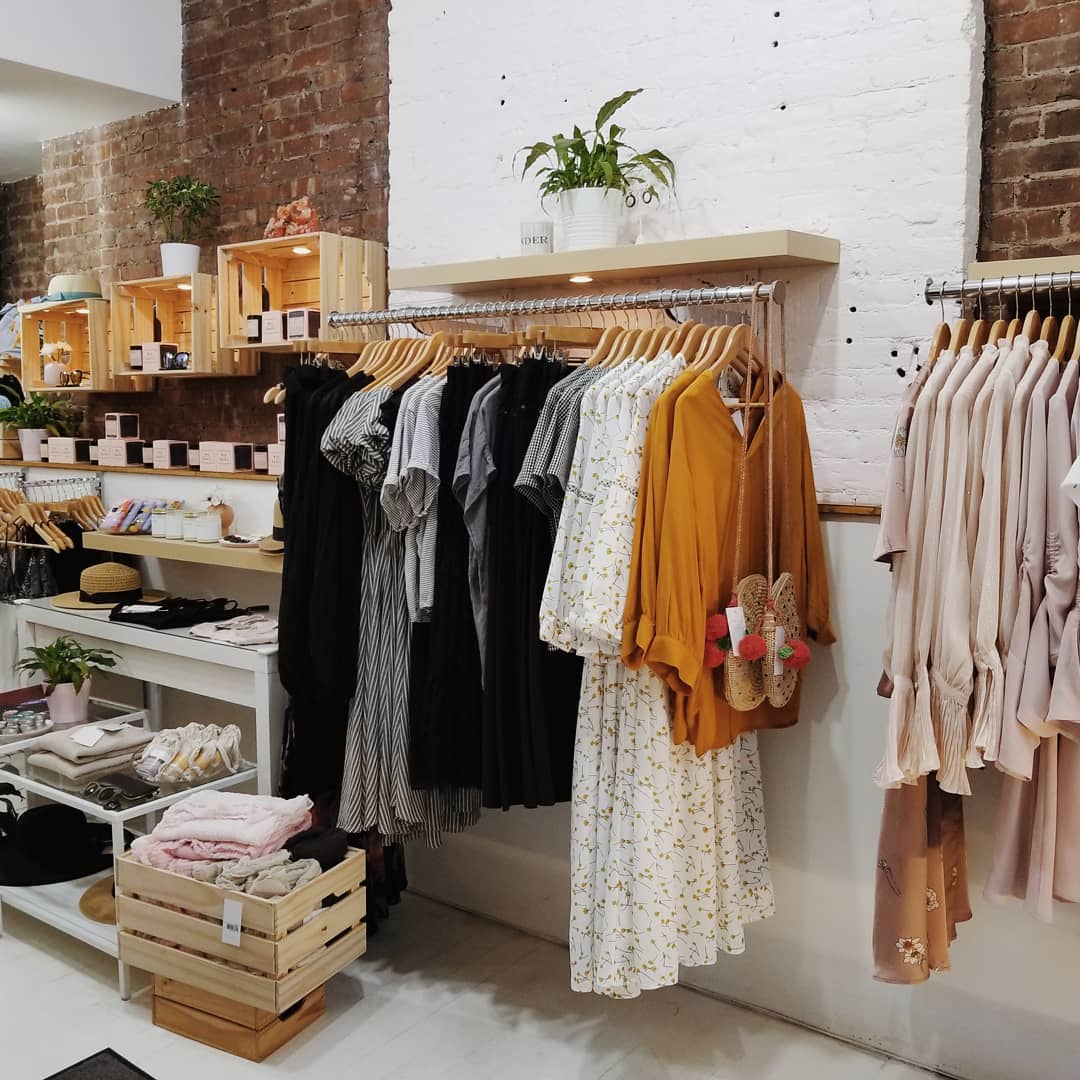How to Style Your Clothing with Boutique Fashion Finds
How to Style Your Clothing with Boutique Fashion Finds
Blog Article
Exploring the Advancement and Effect of Apparel on Modern Style Trends
The development of apparel has dramatically influenced contemporary style trends, combining historic criteria with advanced advancements. Legendary numbers like Coco Chanel and Yves Saint Laurent revolutionized the fashion market by presenting principles that focus on convenience and accessibility, which continue to resonate today. Technological strides in locations such as 3D printing and wise textiles are redefining style opportunities and consumer experiences (boutique fashion). Furthermore, the growing emphasis on inclusivity and sustainability is improving sector requirements. As we take into consideration these complex impacts, one have to wonder about just how these components jointly redefine style's duty in mirroring and forming modern society.
Historic Style Influencers
In the tapestry of fashion background, particular figures have left an enduring mark, forming the trends and designs that specify entire eras. Coco Chanel, a revolutionary developer, redefined ladies's fashion by presenting comfortable, elegant apparel that departed from restrictive corsets. Her legendary Chanel fit and little black dress have actually ended up being timeless staples in closets worldwide. Christian Dior's post-war "New Look" in 1947, with its event of feminineness with complete skirts and cinched midsections, marked a return to luxury and has actually proceeded to influence developers.
Elsa Schiaparelli is one more pivotal figure, renowned for her avant-garde designs that incorporated surrealist art, collaborating with Salvador Dalí to produce wayward items that challenged traditional visual appeals. Her innovative use shade and bold patterns reverberates in modern style. Yves Saint Laurent, meanwhile, democratized high style with prêt-à-porter collections, bringing path designs to the masses and setting a precedent for contemporary ready-to-wear lines.
These dreamers, amongst others, not only transformed style in their times yet additionally set withstanding fads that reverberate in today's fashion business, providing a foundation upon which contemporary designers continue to develop and introduce. Their heritages underscore the importance of imagination and daring in vogue's ever-evolving story.
Technical Innovations in vogue
Among the vibrant landscape of the apparel industry, technical advancements stand at the forefront of development, reshaping how designers develop and customers involve with style. The combination of 3D printing has reinvented style processes, allowing designers to try out complex structures and lasting products that were previously unthinkable. This innovation helps with rapid prototyping, reducing waste and expediting manufacturing times.

Smart textiles, embedding modern technology into materials, are additionally changing the industry. Advancements like self-cleaning and temperature-regulating materials supply enhanced performance and convenience. Wearable technology, integrating attributes like physical fitness monitoring and communication, adds a brand-new measurement to style, merging looks with usefulness.
Social Changes and Design
As technical advancements continue to reshape the fashion industry, cultural shifts are equally prominent, redefining design and customer choices. In current years, the increase of social networks systems has sped up the dissemination of global fashion patterns, permitting diverse social impacts to exist side-by-side and assemble. This electronic interconnectivity has actually promoted the quick exchange of concepts, causing a much more inclusive and eclectic analysis of design that shows the diverse nature of modern society.
Social understanding and gratitude have prompted designers to draw ideas from a more comprehensive spectrum of ethnic and historical contexts, incorporating conventional motifs with modern appearances. This combination has actually led to style that reverberates with a larger target market, advertising a sense of identification and belonging across various demographics. Furthermore, the enhancing demand for customization has driven brands to use adjustable alternatives, allowing consumers to reveal individuality while mirroring their cultural heritage.
Furthermore, shifting social worths have influenced fashion, with inclusivity and variety ending up being main motifs. The market has actually begun to welcome designs and influencers of numerous body types, ethnic cultures, and gender identifications, difficult standard appeal standards. This improvement underscores the power of cultural shifts fit the future of style, as style becomes a much more genuine expression of individual and collective identity.
Sustainability and Modern Design
While the style market remains to progress, the critical for sustainability has become increasingly immediate, affecting like it modern layout practices. This shift aims to resolve ecological issues and honest considerations, bring about a reevaluation of standard production methods. Designers are now incorporating lasting products, such as organic cotton, recycled polyester, and eco-friendly materials, into their collections, lowering the ecological footprint of fashion. The surge of slow-moving fashion, which stresses quality over quantity, encourages consumers to buy ageless pieces instead of transient trends.
Furthermore, modern layout is identified by its advancement in lessening waste and promoting circularity. Techniques such as zero-waste pattern cutting and 3D knitting are acquiring traction, allowing developers to produce garments with very little fabric wastefulness. In addition, brands are adopting clear supply chains, making certain liability and cultivating go to my blog consumer trust. This strategy not just reduces environmental influence however also boosts the social obligation of fashion residences.

Future Trends in Fashion

Sustainability will proceed to be a driving force in forming future fashion fads. The market is progressively adopting green materials and ethical manufacturing methods, replying to a growing customer demand for accountable practices. Advancements such as bio-fabricated materials and closed-loop recycling systems are readied to redefine exactly how clothing is created and consumed, minimizing environmental effect while keeping style and top quality.
Cultural shifts, consisting of the rise of inclusivity and variety, will certainly likewise play an essential role. As culture becomes much more mindful of social issues, style is anticipated to become a platform for expression and adjustment. Designers will likely focus on producing collections that mirror a broader variety of experiences try this web-site and identifications, promoting representation and ease of access.
Verdict
The evolution of clothes substantially influences modern fashion patterns, where historic impacts combine with contemporary styles. Trick numbers like Coco Chanel and Yves Saint Laurent have actually redefined style, while technological developments such as 3D printing and wise fabrics increase imaginative opportunities. Cultural shifts towards inclusivity and sustainability oblige brand names to embrace and adopt ethical practices diversity. This ongoing evolution underscores fashion's role as a mirror to societal values and technological improvement, recommending a future abundant with advancement and inclusivity.
The development of clothes has significantly affected contemporary style trends, combining historic precedents with cutting-edge innovations.Among the vibrant landscape of the fashion sector, technical developments stand at the forefront of innovation, improving exactly how designers develop and consumers engage with style.While the fashion industry proceeds to develop, the vital for sustainability has come to be progressively urgent, affecting modern layout practices. As sustainability becomes ingrained in modern layout, it paves the means for a much more responsible and aware fashion sector.
The development of apparel substantially influences modern-day style fads, where historical impacts merge with contemporary layouts.
Report this page